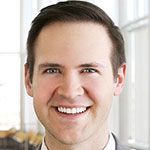We are lucky to be a part of an amazing specialty that improves patients’ lives and lets us work with cutting edge technology, all in a society that has a tremendous need for our skills.
For me the career opportunities available in ophthalmology are exciting. But with that huge opportunity comes an even bigger challenge of access to care, which will be one of the trickiest tasks our generation of ophthalmologists will have to address.
One alarming fact: The number of ophthalmologists in the U.S. has remained stable since 1990, while the number of patients over age 65 will increase 42% by 2030 and 83% by 2050. This provider-to-patient imbalance will continue to worsen as 50% of ophthalmologists are older than 50 years old and closer to retirement than training. This shortage is already noticeable in two of our specialties: pediatric ophthalmology and neuro-ophthalmology. These specialties deal with some of our most vulnerable and sick patients, many of whom are already struggling to obtain care.
There are no neuro-ophthalmologists in my entire state of South Dakota. The nearest provider is four hours away and has a 6 month wait. Neuro-ophthalmology fellowship programs matched only 25 out of 45 spots last year. Of those, 50% are international graduates, with many planning to leave the U.S. after training. There are several reasons that ophthalmology graduates choose not to do a fellowship in neuro-ophthalmology, but many of these are based on misconceptions of the specialty.
When surveyed, 60% of residents said they chose not to enter the subspecialty due to a lack of opportunity to perform surgery. But in reality, 70% of practicing neuro-ophthalmologists have a surgical component to their practice. There are no easy solutions to this shortage. The North American Neuro-Ophthalmology Society (NANOS) and its young ophthalmology section are working diligently to educate residents on the many opportunities and configurations of a rewarding practice in neuro-ophthalmology to hopefully increase the pipeline.
The parallels in pediatric ophthalmology are eerily similar. In my state, there is only one pediatric ophthalmologist. He provides all of the ROP care and has a several month clinical and surgical wait time. The match rate for pediatrics fellowship in 2021 was 69%, and 18 out of 43 fellows were international medical graduates. Twenty-five U.S. graduates per year is below the replacement rate and will simply not adequately address the growing need and shrinking supply of pediatric ophthalmology care.
Both specialties are suffering from a supply problem, and although the American Association for Pediatric Ophthalmology and Strabismus and NANOS are valiantly educating the current pool of ophthalmology residents on the benefits of their specialties, there are not enough residents to go around. For all specialties in 2021, only 81% of fellowship positions were filled. As there have not been significant expansions in fellowship programs, it appears that the supply problem is upstream: not enough applicants from ophthalmology residency.
I believe we need to not only advocate for more funding from the Centers for Medicare & Medicaid Services to increase the number of ophthalmology residency spots, but also encourage non-ophthalmology residents into pediatric and neuro-ophthalmology fellowships. An option might be to promote career options in neuro-ophthalmology to neurology residents and consider expanding pediatric ophthalmology fellowships to residents with pediatric residency training background as well.
Consideration should also be given to a potential direct entrance into these high-need specialties wherein we should also consider allowing medical students to apply directly for specific spots in high-need specialties designated for pediatrics or neuro-ophthalmology, similar to integrated plastic surgery residencies.
Ophthalmology departments can also help combat this shortage by supporting these specialists and making the positions more desirable to physicians in training to consider. Options might include financial incentives, mixed practice options or physician extenders to help support and triage increased clinical volume or need.
Our profession is just starting to feel the pinch of lack of access, and timely solutions are needed to ensure our patients receive the care they need.
Want to Know More?
Attend the YO Lounge Power Hour at AAO 2022:
Love at First Sight: The Subspecialty Dating Game, 1-2 p.m., Sunday, Oct 2
 About the author: Daniel Terveen, MD, is a cataract, cornea, refractive and glaucoma specialist at Vance Thompson Vision in Sioux Falls, S.D. He completed residency at the University of Iowa and fellowship at Vance Thompson Vision. He serves on the Academy YO Advocacy Subcommittee and the Secretariat for State Affairs.
About the author: Daniel Terveen, MD, is a cataract, cornea, refractive and glaucoma specialist at Vance Thompson Vision in Sioux Falls, S.D. He completed residency at the University of Iowa and fellowship at Vance Thompson Vision. He serves on the Academy YO Advocacy Subcommittee and the Secretariat for State Affairs.